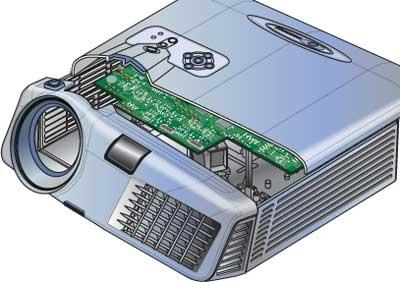Inner Workings: Inside a Front Projector

| Click the image to see how a front projector is put together |
With the prices of flat-panel HDTVs falling faster than the World Series hopes of a Kansas City Royals fan, it's not surprising that front projectors haven't been getting their fair share of attention.
But prices for high-def front projectors have also been in a freefall and might be the best big-screen bargain available. With models now selling for less than $1,000 and with some 1080p models heading down toward the $3,000 mark, a projector paired with a screen measured in feet instead of inches packs some serious, hard-to-beat home theater wallop.
Although front projectors aren't ideal as everyday TVs - for one thing, their costly lamps can burn out quickly with frequent use - models using the same DLP, LCoS, and LCD technologies found in rear-projection TVs are a big improvement over bulky, finicky CRT projectors. And digital projectors aren't just cheaper - they're also lighter and easier to set up and use, and they don't need the constant calibration that older tube-based models required.
- Log in or register to post comments






























































